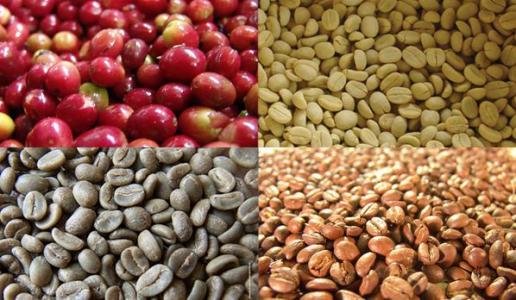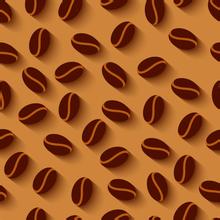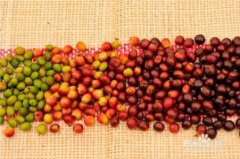Flavor characteristics of Brazilian Minas Coffee A brief introduction to the Grinding scale Manor
Flavor characteristics of Brazilian Minas Coffee A brief introduction to the Grinding scale Manor
According to this standard, the producing areas of Brazil can also be divided into five grades:
Extremely meek: South Minas, Serrado platform in the central and western part of Minas / Mojiana / Bahia Diamond Plateau in northeastern Sao Paulo province
Supple: slightly higher in Bahia / Minas southeast forest / Parana / San Espiritu (mausoleum) / central and western S ã o Paulo
A little softer: East and northeast of Minas
Not easy to read: Espiritu Santo / Parana (low altitude)
Iodine choking: slightly lower southeast of Minas / Esp í rito Santo
In 1727, the Brazilian government sent a personable army officer to secretly bring coffee seeds back to Brazil from French Gaiana under the pretext of mediating border disputes. It is said that the governor's wife of French Gaiana was so fascinated by the officer at that time that he secretly brought coffee tree seeds to him at the farewell dinner. At present, there are 2 million hectares of land in Brazil to grow coffee, and the largest is Arabica. These beans will eventually be sent to the hands of large bakers in various countries, that is, the well-known Santos (in the name of the port of export santos, not the producing area). Because of the coffee competition after 2000, the quality of coffee beans produced in the high-altitude areas of the south was appreciated, mainly by the farms around the Minas platform, and the coffee quality was also the largest among Brazilian beans. Such as Syracuse in the west of Minas and Matas in the east, Bashiya in the north or small farms in the south, Minas has almost become synonymous with Brazilian boutique coffee.
Brazil accounts for about 1/3 of the world's annual coffee production (by far the world's largest coffee producer and exporter). In 2015, Brazil produced a total of 36.89 million bags of coffee (each bag of 60kg). You can imagine how many cups of coffee can be made.

Important Notice :
前街咖啡 FrontStreet Coffee has moved to new addredd:
FrontStreet Coffee Address: 315,Donghua East Road,GuangZhou
Tel:020 38364473
- Prev

Candlelight 90 flavor description characteristics of the origin of the name taste production area
Candlelight 90 flavor describes the origin of the name the charming fruit tone of the candle candle in the producing area inherits the charming aroma given by the traditional Egyptian sun, expressing unreservedly the sweetness of round and full aftertaste and the right acidity of fruit. The daily brewing of candlelight is also quite easy to use, and the bean itself is rich in flavor, whether it is fresh dripping or strong meaning.
- Next

Costa Rican Coffee Bean hand Chong taste and flavor describe the planting environment in the producing area
Costa Rican coffee beans taste flavor description of the growing environment Costa Rican coffee is full of particles, unique and strong flavor, can grow above 1500 meters above sea level. High-quality Costa Rican coffee is called extra hard beans. High altitude can increase the acidity of coffee beans and thus increase the flavor, and the cooling at night can slow down the growth of trees, thus making coffee beans more flavor.
Related
- Detailed explanation of Jadeite planting Land in Panamanian Jadeite Manor introduction to the grading system of Jadeite competitive bidding, Red bid, Green bid and Rose Summer
- Story of Coffee planting in Brenka region of Costa Rica Stonehenge Manor anaerobic heavy honey treatment of flavor mouth
- What's on the barrel of Blue Mountain Coffee beans?
- Can American coffee also pull flowers? How to use hot American style to pull out a good-looking pattern?
- Can you make a cold extract with coffee beans? What is the right proportion for cold-extracted coffee formula?
- Indonesian PWN Gold Mandrine Coffee Origin Features Flavor How to Chong? Mandolin coffee is American.
- A brief introduction to the flavor characteristics of Brazilian yellow bourbon coffee beans
- What is the effect of different water quality on the flavor of cold-extracted coffee? What kind of water is best for brewing coffee?
- Why do you think of Rose Summer whenever you mention Panamanian coffee?
- Introduction to the characteristics of authentic blue mountain coffee bean producing areas? What is the CIB Coffee Authority in Jamaica?

